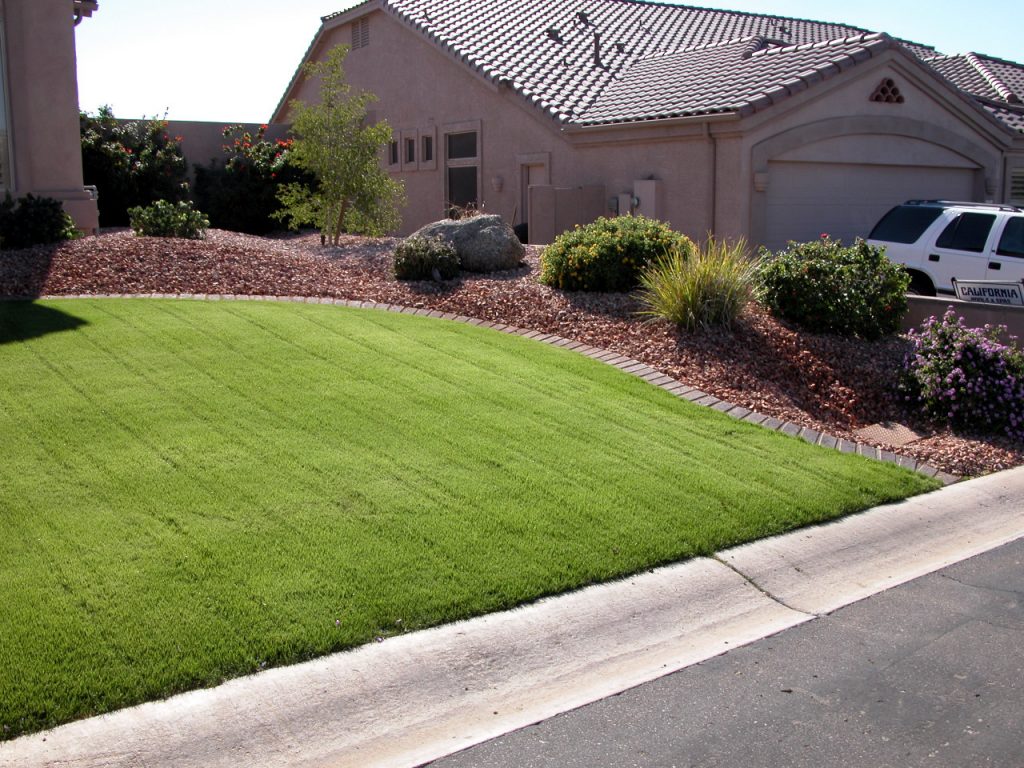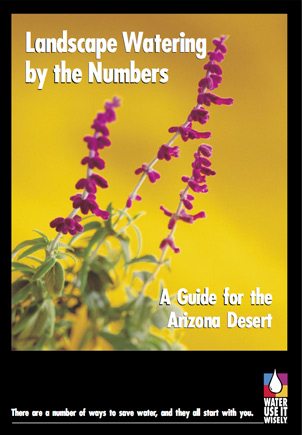It’s one of the great debates. Like Yankees vs. Red Socks, Democrats vs. Republicans, cat lovers vs. dog lovers, there are those who overseed their grass vs. those who don’t. Why the great debate? Well, it’s hard to say exactly how it all started, but it likely has something to do with American’s love of lush green lawns and doing whatever it takes to have them.
The fact that Bermuda grass and its hybrid varieties are still the best performers in Arizona’s low desert regions probably factors in. While Bermuda thrives in our summer heat, around late October to mid-November, this summer grass will go dormant, turning a nice shade of golden-tan.
Swooping in comes the promise of an emerald-green delicate carpet of ryegrass. The ritual starts in September but may go as late as mid-November. You start seeing mowers surrounded in a cloud of dust as landscapers start scalping lawns in preparation of overseeding. The scalping, or extra low mowing, allows the seed better contact with the soil below. Then the daily multiple waterings begin to ensure germination of seed.
Just how much water does it take to have this winter luxury? More than 8,000 gallons of water for every 1,000 square feet of grass is needed. This seems somewhat difficult to justify when water is such a precious resource in Arizona. By learning to accept a less than lush lawn during the winter months, property owners will not only realize significant water savings for themselves and their community, they will also save a lot of time and money. So if you’re looking for a reason not to overseed, take a look at these …
Top Ten Reasons Not to Plant a Winter Lawn:
10. Save time – No need to scalp the lawn, prepare the seedbed, seed, water, or mow.

9. Save water – Getting ryegrass seed to germinate requires watering three times a day or more, and spikes in water usage are always noticeable during the months of October and November when winter rye is seeded. By not overseeding, over 8,000 gallons of water can be saved for every 1,000 square feet of grass each season. In contrast, dormant Bermuda only needs to be watered once a month from November to February – even less if we get winter rains.
8. Preserve water quality – Less fertilizers and pesticides will be needed. Much of our water pollution comes from runoff of these products from urban landscapes.
7. Save money – Save on the cost of seed, labor, water, and gasoline for mowing. Also, wastewater rates are often determined by your winter water usage. If you use more water in the winter, your utility bill wastewater rates will be higher the rest of the year.
6. Save landfill space – Scalping Bermuda grass creates a great deal of waste for the landfills. Ryegrass clippings can create additional waste all winter and spring.
5. Save the air – Gasoline mowers and other lawn equipment contributes to our air pollution problems, and the scalping process releases dust and other particles into the air.
4. Decrease noise pollution – Mowers, weed whackers, and leaf blowers have become a major source of background noise in many neighborhoods. The drone of lawn equipment contributes to an already noisy world.
3. Save frustration – Problems with seed germination, fertilizers, diseases, and irrigation are all common when planting a winter lawn.
2. Set an example -We live in a desert and this is an opportunity to demonstrate your community leadership with a responsible outlook towards our water supply.
And the number one reason not to plant a winter lawn …
1. Give your Bermuda a break – Overseeding can be stressful for your Bermuda grass. In the fall, scalping the summer grass before dormancy doesn’t allow for adequate storage of energy in the roots. In the spring, the rye competes with Bermuda, and customers often withhold water to transition from winter to summer grass. Unfortunately, this will also stress the Bermuda.

You say you have to overseed…
OK, OK, so you say that you have to overseed. Either your spouse will divorce you if you don’t, your HOA requires you to overseed or you’ll get fined (and you’re still working on changing that code), or you just have to put your toes into some green grass in the winter and you can’t afford a trip south of the equator?
Here are some tips to keep it as water efficient as possible:
- Follow these proper steps from the University of Arizona for Overseeding Winter Grasses into Bermudagrass Turf.

- Don’t overseed too early. Mid-October to mid-November is best. Less water will be needed and the rye won’t get stressed from the higher temperatures of early fall. Check out the desert lawn care guide linked on our Water – Use It Wisely resources page for extra care tips.
- Don’t overseed the entire yard if you don’t have to. Just do select areas.
- Water your grass properly. To germinate the grass seed, apply light, frequent watering about four times a day. Cut back on the frequency once grass is germinated. For winter watering schedules check out our Landscape Watering by the Numbers guide. It tells you how much and how often to water to keep your grass healthy and beautiful without water waste.
- If your grass is in your back yard, you might want to consider having rye grass only and having no grass (or watering) in the summer months. We’re still not sure how well this would work (weeds, dust, etc.), but if you try it and it works well, let us know.
- When you’ve had enough of this vicious cycle, consider removing all the grass. Yep, we have a guide for that too. This turf removal guide is another link on our Water – Use It Wisely resources page.



